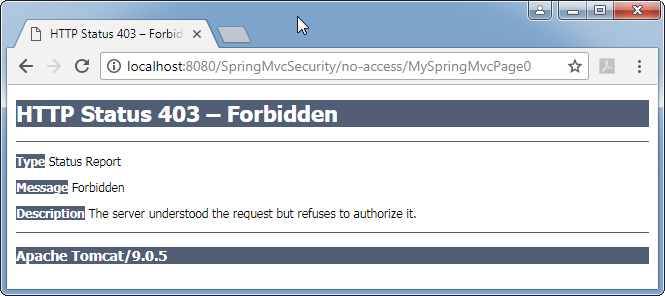#
SPRING Security : Secure Web Application
This tutorial explains to you how you can secure a Web Application with Spring 5.
In order to secure a Web Application using Spring Security 5, you need a Web Application first. My demo will start from my Spring MVC Web Application I have created before this article. You can see it here .
In order to secure the application above, I will add the following the pom.xml file:

The version of the artifact could be a more recent one, but I tested my application using 5.0.4.RELEASE.
Now you can add the security classes :
package com.example.config;
import org.springframework.security.web.context.AbstractSecurityWebApplicationInitializer;
public class WebSecurityInitializer extends AbstractSecurityWebApplicationInitializer {
//public WebSecurityInitializer() {
// super(WebSecurityConfig.class);
//}
}package com.example.config;
import org.springframework.context.annotation.Configuration;
import org.springframework.security.config.annotation.authentication.builders.AuthenticationManagerBuilder;
import org.springframework.security.config.annotation.web.builders.HttpSecurity;
import org.springframework.security.config.annotation.web.configuration.EnableWebSecurity;
import org.springframework.security.config.annotation.web.configuration.WebSecurityConfigurerAdapter;
import org.springframework.security.crypto.factory.PasswordEncoderFactories;
import org.springframework.security.crypto.password.NoOpPasswordEncoder;
import org.springframework.security.crypto.password.PasswordEncoder;
@Configuration
@EnableWebSecurity
public class WebSecurityConfig extends WebSecurityConfigurerAdapter {
@Override
protected void configure(AuthenticationManagerBuilder auth) throws Exception {
PasswordEncoder passwordEncoder = PasswordEncoderFactories.createDelegatingPasswordEncoder();
String encoded = passwordEncoder.encode("pass1");
System.out.println("encoded="+encoded);
auth.inMemoryAuthentication().passwordEncoder(NoOpPasswordEncoder.getInstance())
.withUser("user").password("u").authorities("USER")
.and()
.withUser("admin").password("a").authorities("USER","ADMIN");
}
@Override
protected void configure(HttpSecurity http) throws Exception {
http
.authorizeRequests()
.antMatchers("/").permitAll()
.antMatchers("/myLogout").permitAll()
.antMatchers("/shared/**").permitAll()
.antMatchers("/no-access/*").denyAll()
.antMatchers("/secured/**").hasAuthority("USER")
.antMatchers("/admin-content/**").hasAuthority("ADMIN")
.and()
.formLogin() //Default login
.and()
.logout().logoutSuccessUrl("/myLogout").permitAll()
.and().csrf().disable();
}
}Add WebSecurityConfig.class into the MyAppStarter class :
package com.example.starter;
import org.springframework.web.servlet.support.AbstractAnnotationConfigDispatcherServletInitializer;
import com.example.config.WebConfig;
import com.example.config.WebSecurityConfig;
public class MyAppStarter extends AbstractAnnotationConfigDispatcherServletInitializer{
// Load database and spring security configurations
@Override
protected Class<!--?-->[] getRootConfigClasses() {
return new Class[] { WebSecurityConfig.class};
}
// Load spring web configuration
@Override
protected Class<!--?-->[] getServletConfigClasses() {
return new Class[] {WebConfig.class};
}
@Override
protected String[] getServletMappings() {
return new String[] {"/"};
}
}In addition to the start non-secured application I use an index.jsp and myLogout.jsp with the
following definitions:
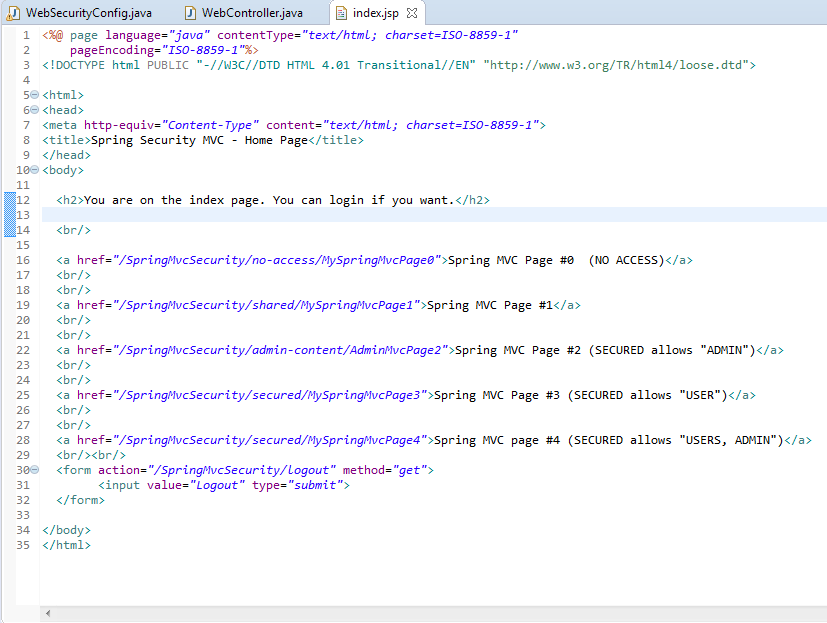
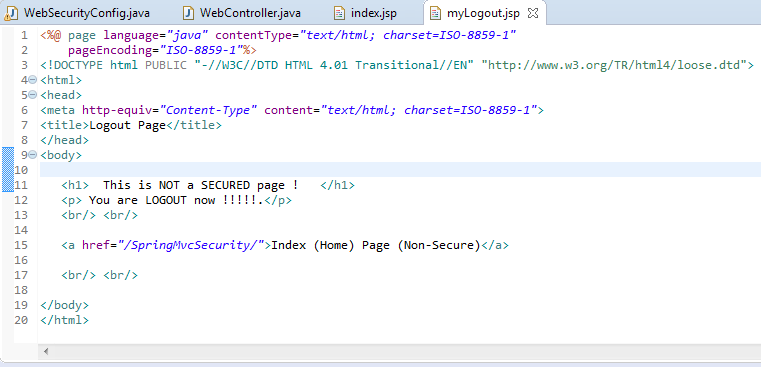
When you run the application, you will see the following index page:
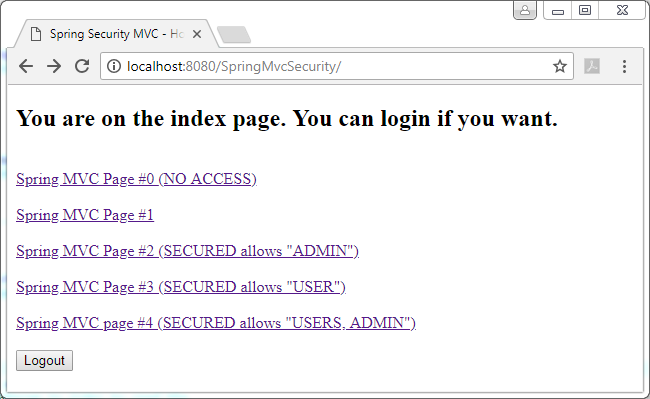
When you click on "Logout" button you will see the logout page, and you will be logged out automatically:
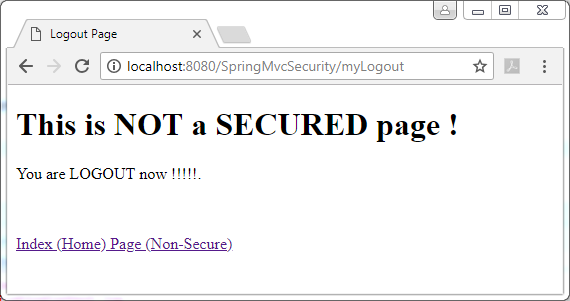
When you click on a secured link you will the the default login page:
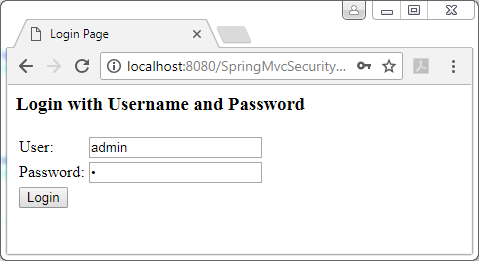
If you are logged in, you can access a secured page:
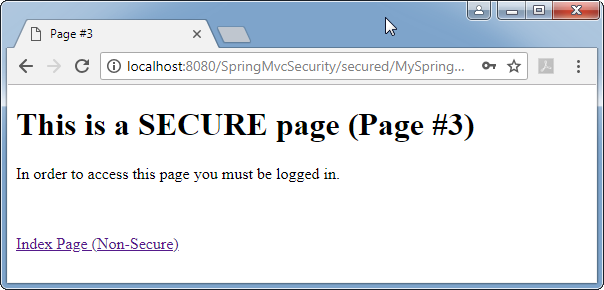
In my case, you cannot access the Page0 and for this reason you will see the following screen:
